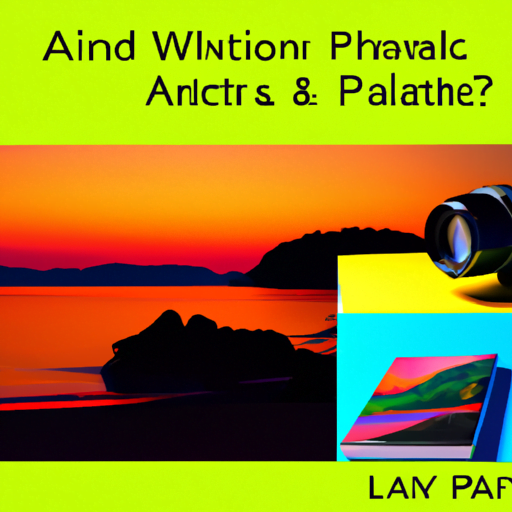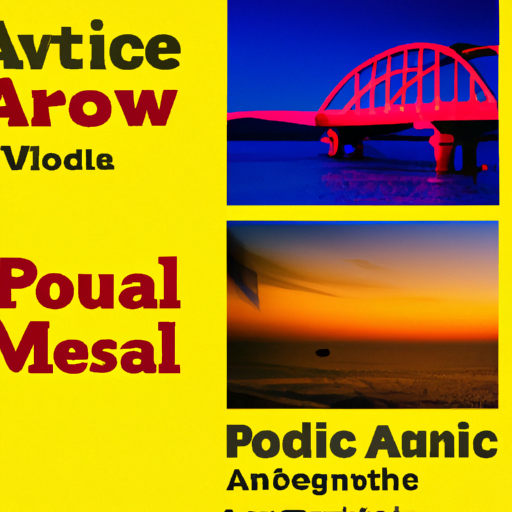
-
Table of Contents
The Impact of Typography in Travel Brochures

Typography plays a crucial role in the design and effectiveness of travel brochures. It is not just about choosing a font; it is about creating a visual language that captures the essence of a destination and entices potential travelers. In this article, we will explore the impact of typography in travel brochures and how it can influence the decision-making process of travelers.
The Power of Typography
Typography is more than just the selection of fonts; it is the art of arranging type to make written language readable and appealing. In the context of travel brochures, typography can evoke emotions, convey information, and create a sense of place. Here are some ways typography can have a significant impact:
- Setting the Tone: Typography sets the overall tone and mood of a travel brochure. Whether it’s a playful and adventurous font for a family-friendly destination or an elegant and sophisticated font for a luxury resort, the typography choice immediately communicates the atmosphere and experience awaiting the traveler.
- Enhancing Readability: The right typography improves the readability of the brochure, making it easier for potential travelers to absorb the information. Clear and legible fonts ensure that the text is easily scannable, allowing readers to quickly find the information they need.
- Creating Hierarchy: Typography helps create a visual hierarchy within the brochure, guiding the reader’s attention to the most important information. By using different font sizes, weights, and styles, designers can emphasize key details such as destination names, attractions, or special offers.
Case Studies: Successful Typography in Travel Brochures
Let’s take a look at some real-life examples of travel brochures that effectively utilize typography to capture attention and inspire travel:
1. Wanderlust Adventures
The Wanderlust Adventures brochure uses a combination of bold and playful typography to convey a sense of excitement and adventure. The use of a handwritten font for headings and subheadings adds a personal touch, making the reader feel like they are embarking on a unique journey. The font choice, combined with vibrant colors and captivating imagery, creates a brochure that is visually appealing and enticing.
2. Luxe Escapes
Luxe Escapes, a luxury travel agency, opts for an elegant and sophisticated typography style in their brochures. The use of a serif font exudes a sense of refinement and exclusivity. The typography is complemented by high-quality images and ample white space, creating a brochure that feels luxurious and aspirational. The careful selection of fonts and their arrangement conveys the high-end experience that Luxe Escapes offers.
The Psychology of Typography
Typography has a psychological impact on readers, influencing their perception and decision-making process. Here are some psychological factors to consider when choosing typography for travel brochures:
- Emotional Connection: Different fonts evoke different emotions. For example, a script font may create a sense of romance and nostalgia, while a bold sans-serif font can convey a feeling of modernity and adventure. Understanding the emotions associated with different fonts can help designers create a brochure that resonates with the target audience.
- Trust and Credibility: Typography can influence how trustworthy and credible a brochure appears. Studies have shown that serif fonts are perceived as more reliable and authoritative, making them suitable for conveying important information such as safety guidelines or travel regulations.
- Brand Consistency: Typography plays a crucial role in maintaining brand consistency. By using consistent fonts across all marketing materials, including brochures, travel companies can reinforce their brand identity and create a cohesive visual experience for customers.
Typography Best Practices for Travel Brochures
When designing travel brochures, it is essential to follow some best practices to ensure the typography effectively communicates the desired message. Here are some tips to consider:
- Choose Fonts Wisely: Select fonts that align with the destination and target audience. Consider the emotions and associations each font evokes and choose accordingly.
- Pair Fonts Thoughtfully: Combine fonts that complement each other and create a harmonious visual experience. Pairing a serif font with a sans-serif font can create an interesting contrast.
- Use Hierarchy: Establish a clear hierarchy by varying font sizes, weights, and styles. This helps guide the reader’s attention and ensures important information stands out.
- Consider Readability: Prioritize legibility by selecting fonts that are easy to read, even at smaller sizes. Avoid overly decorative or complex fonts that may hinder readability.
- Balance Text and Imagery: Find the right balance between text and imagery. Allow enough white space to prevent overcrowding and make the brochure visually appealing.
Summary
Typography plays a vital role in the effectiveness of travel brochures. It sets the tone, enhances readability, and creates a visual hierarchy. By carefully selecting fonts and arranging them thoughtfully, travel companies can evoke emotions, convey information, and influence the decision-making process of potential travelers. Understanding the psychology of typography and following best practices ensures that travel brochures effectively communicate the desired message and capture the attention of the target audience.
